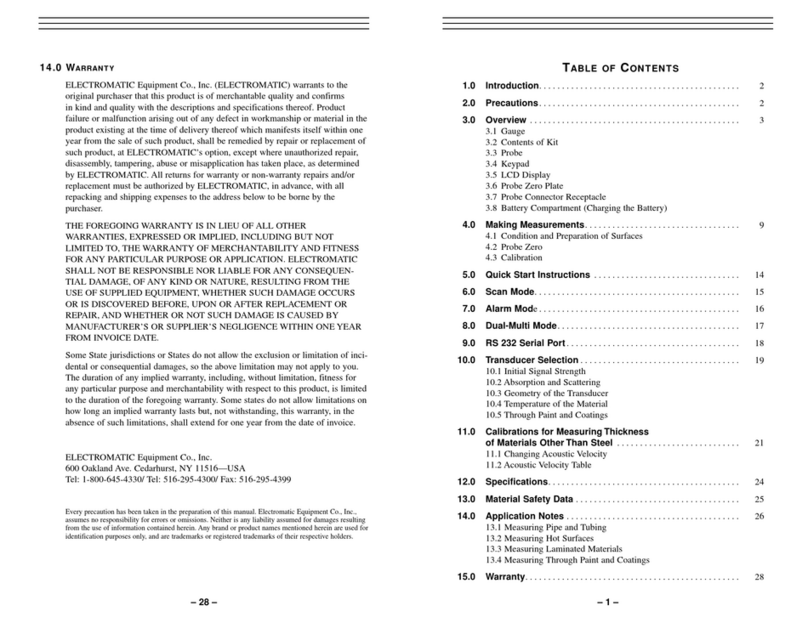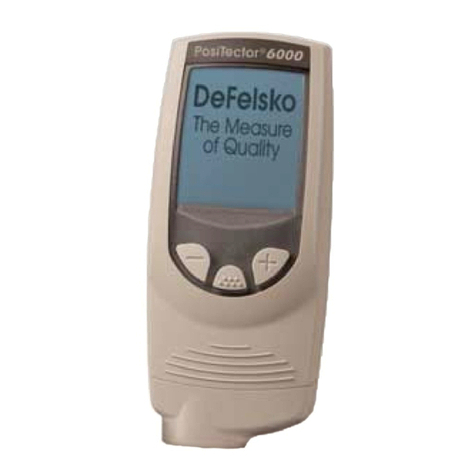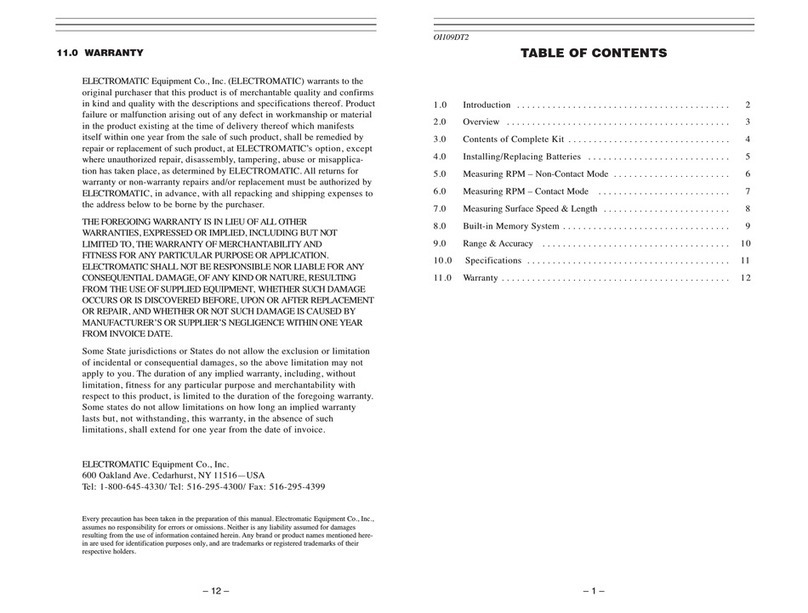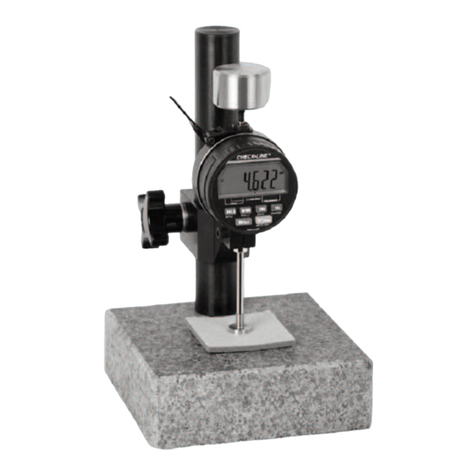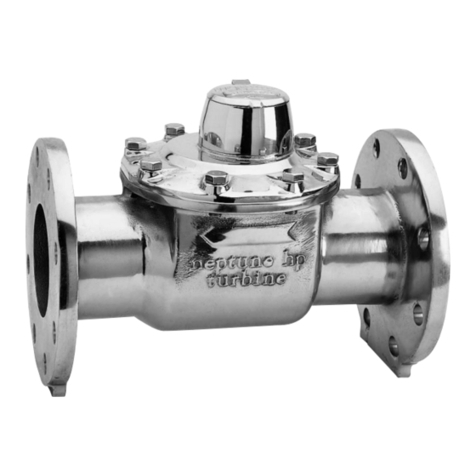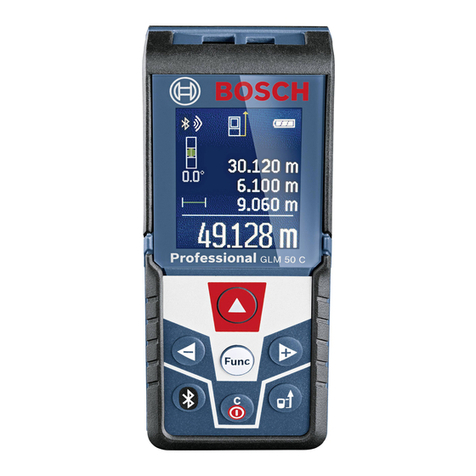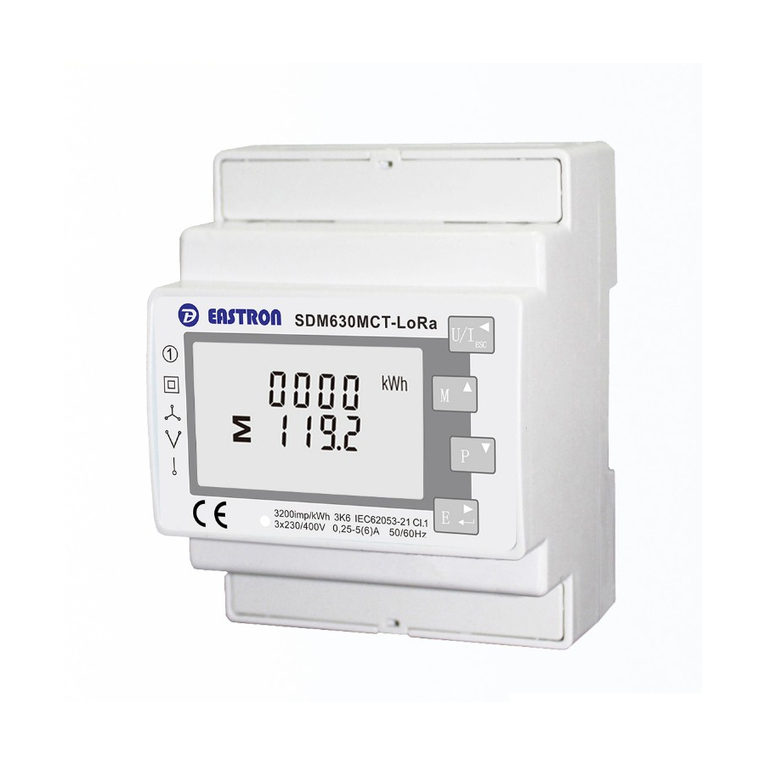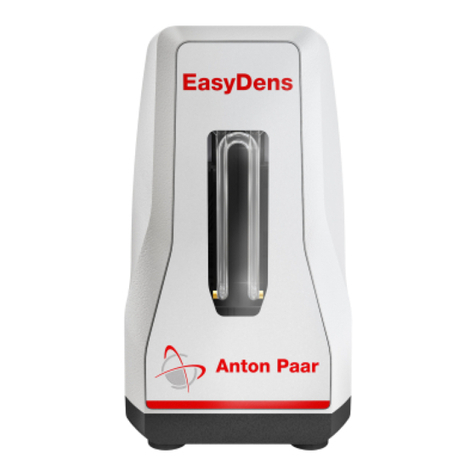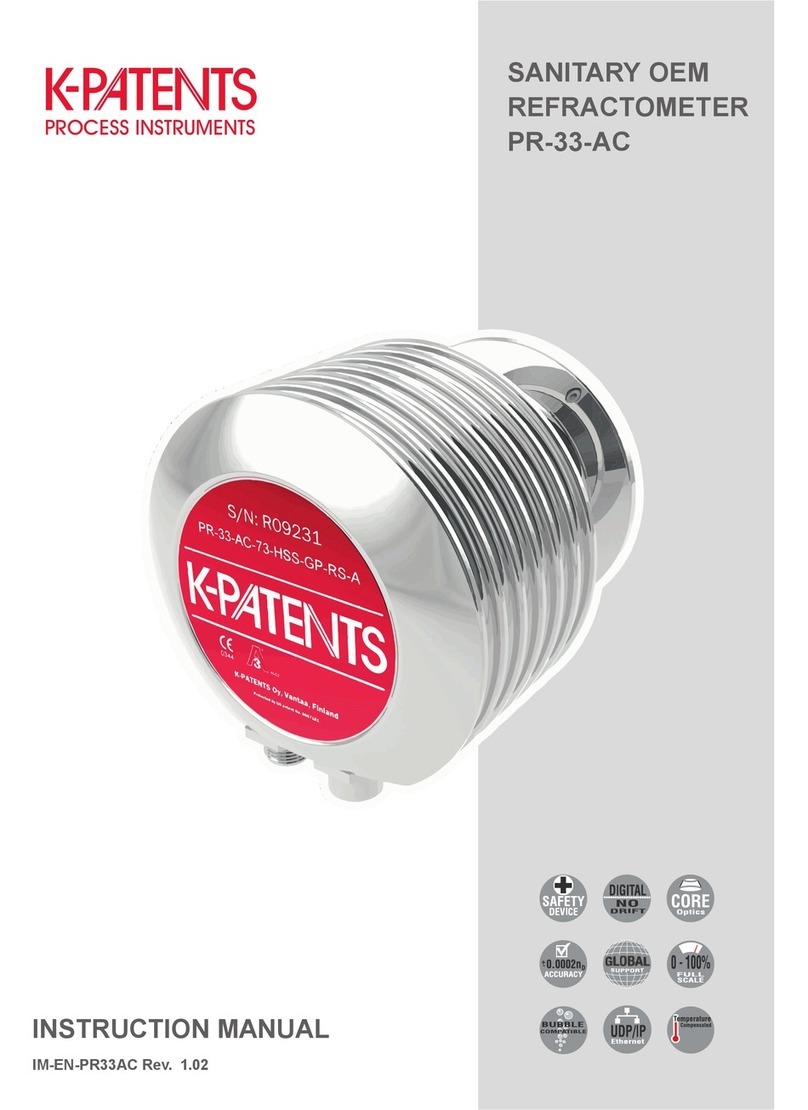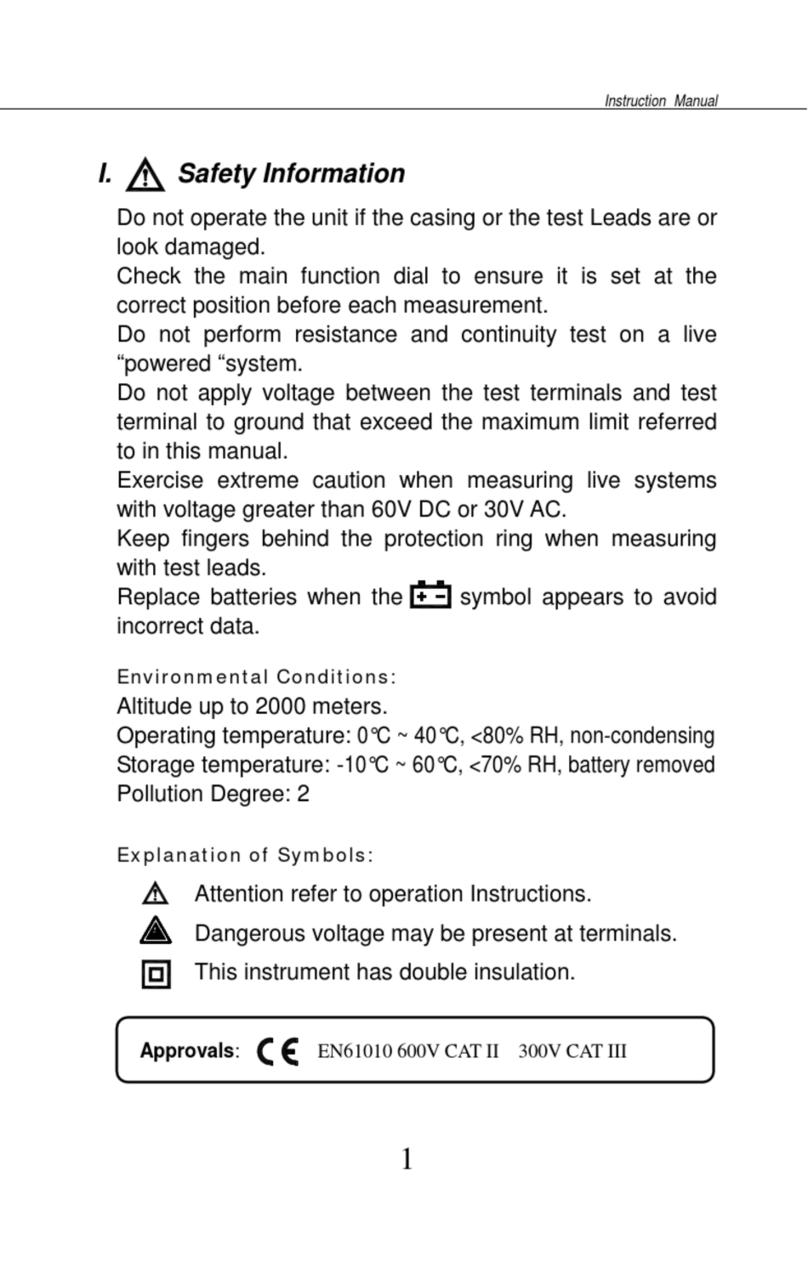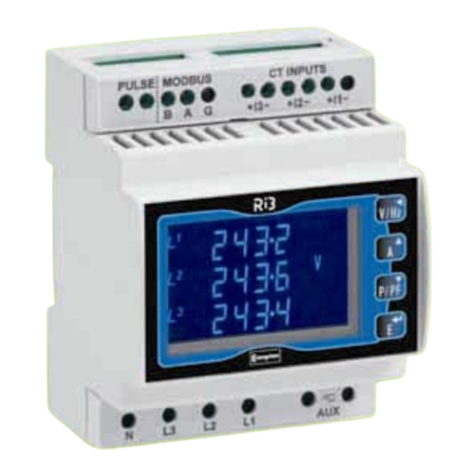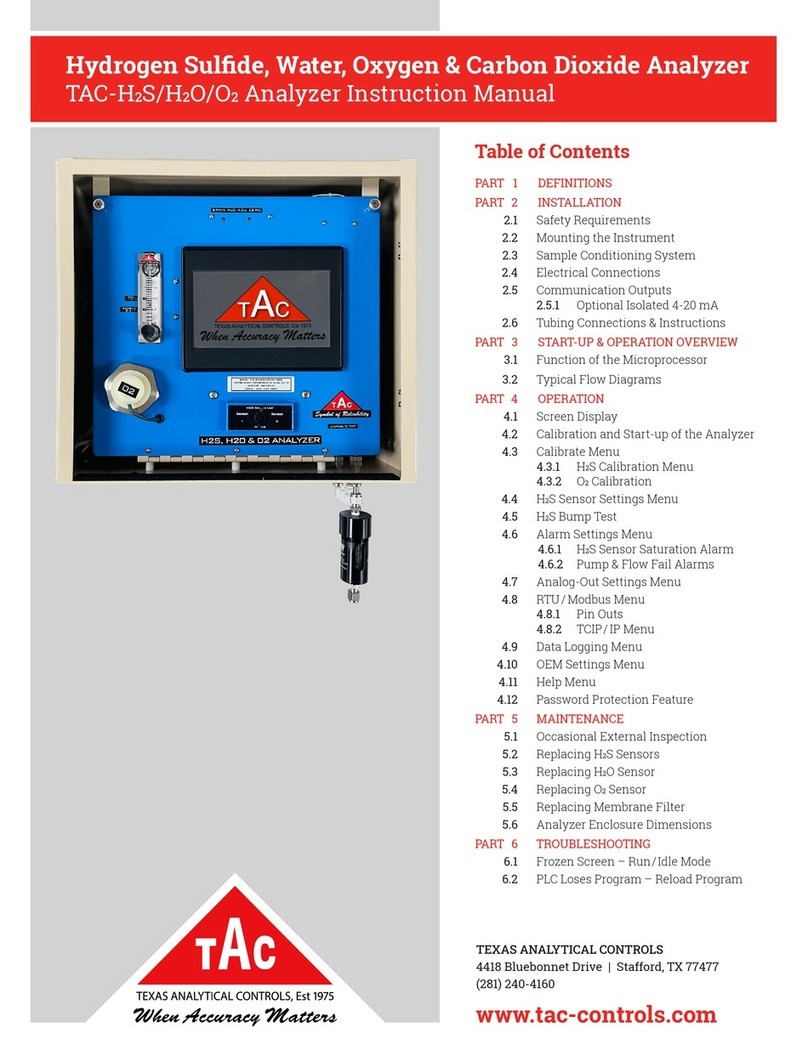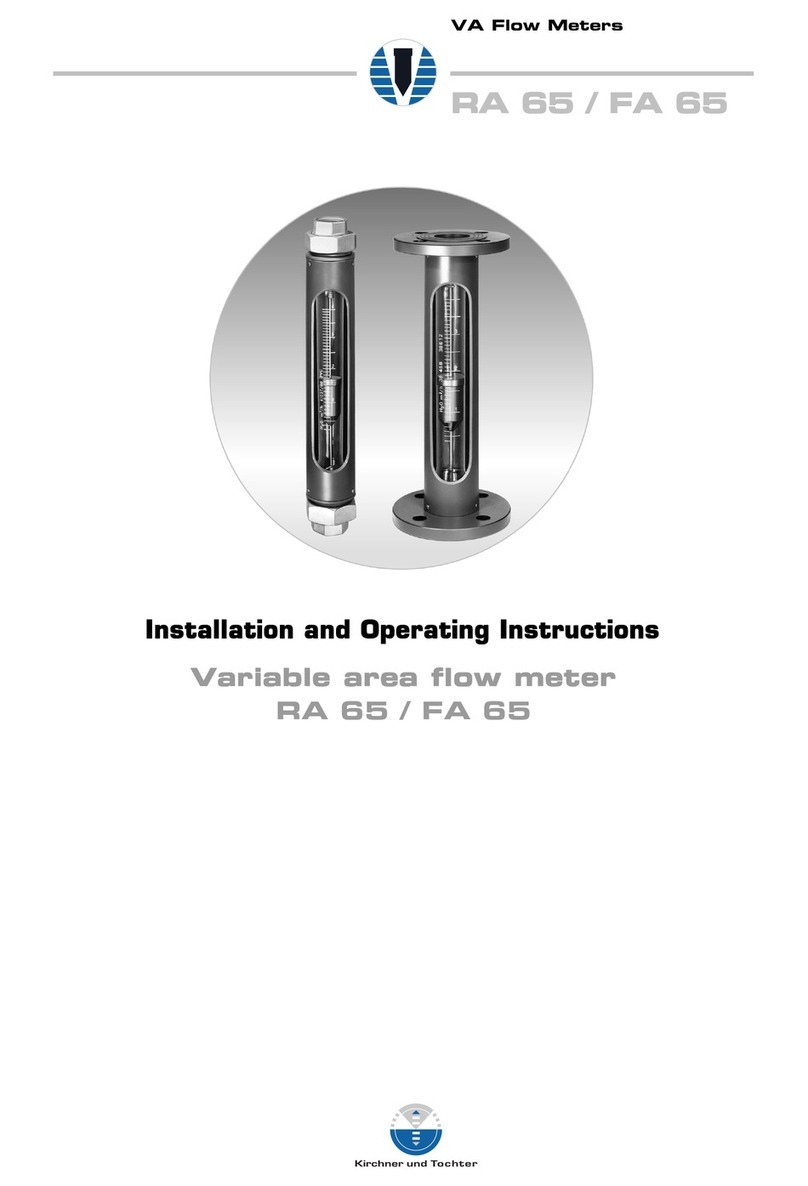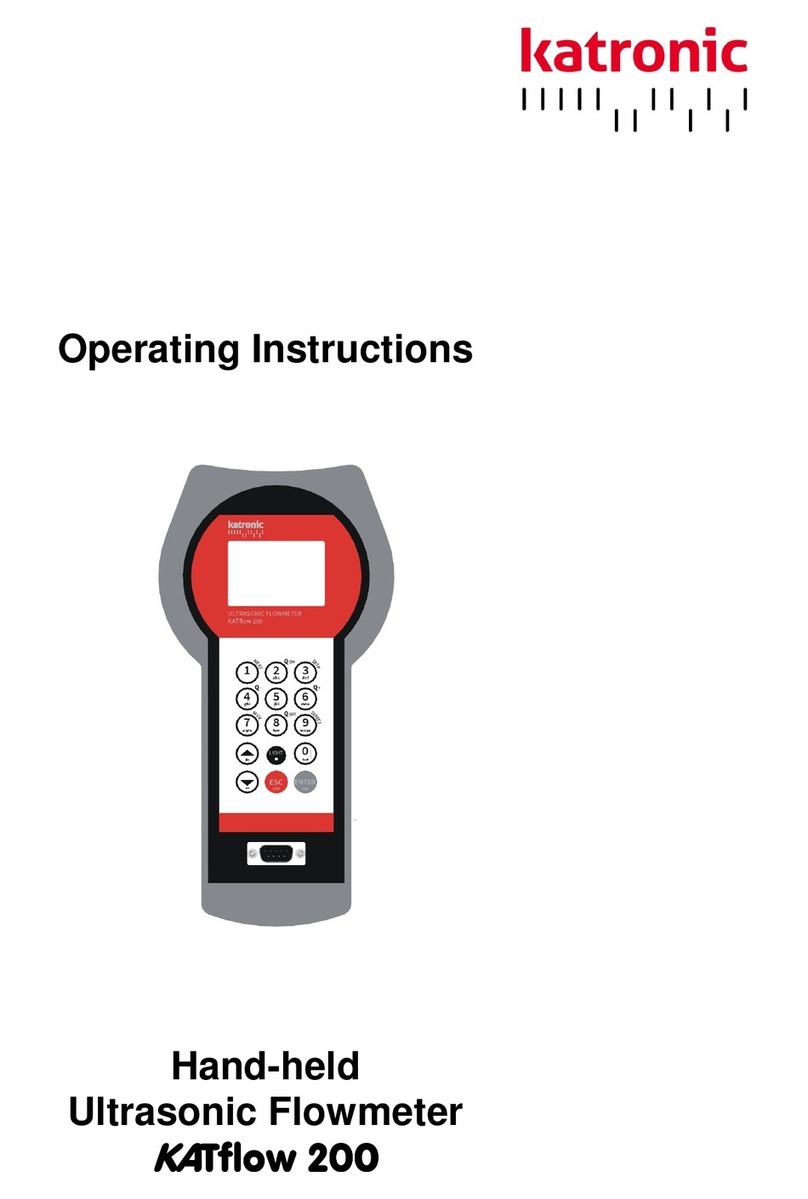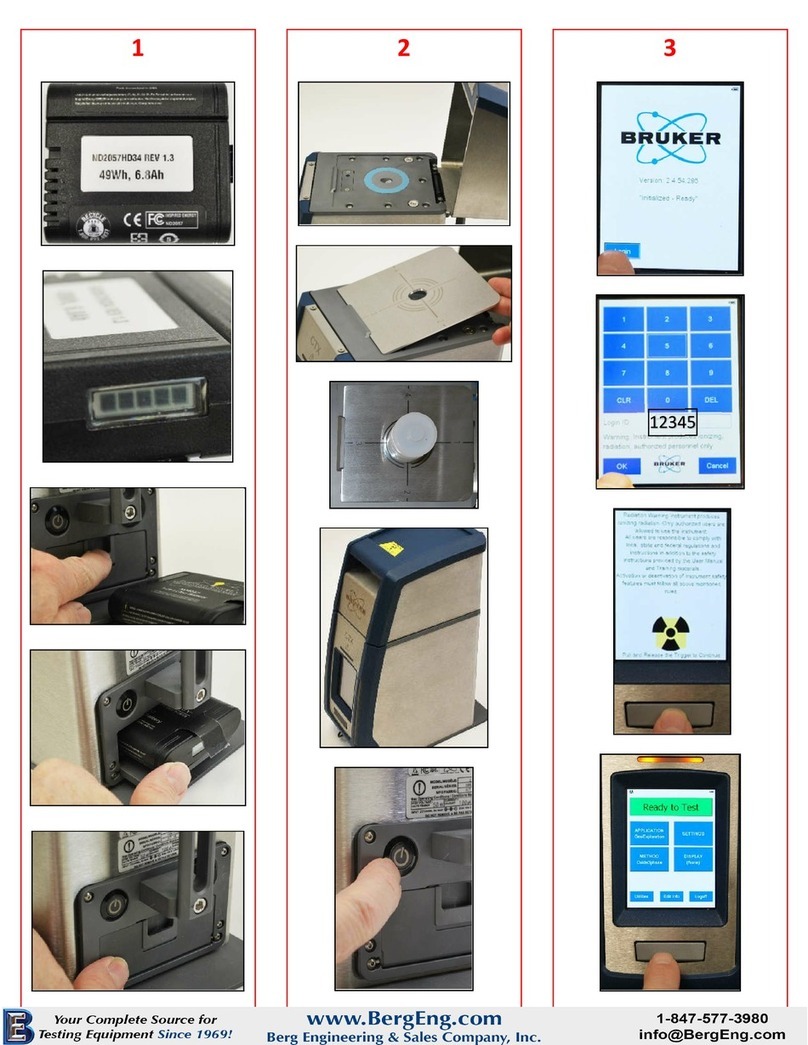–6 –
the condition persists, it may be necessary to select a different transducer (size or
frequency) for the material being measured. See page 15 for information on
Transducer selection.
While the transducer is in contact with the material that is being measured, the
TI-007DL will perform four measurements every second, updating its display as
it does so. When the transducer is removed from the surface, the display will hold
the last measurement made.
IMPORTANT
Occasionally, a small film of couplant will be drawn out between the transducer and
the surface as the transducer is removed. When this happens, the TI-007DL may per-
form a measurement through this couplant film, resulting in a measurement that is
larger or smaller than it should be. This phenomenon is obvious when one thickness
value is observed while the transducer is in place, and another value is observed after
the transducer is removed.
Condition and Preparation of Surfaces
In any ultrasonic measurement scenario, the shape and roughness of the test surface
are of paramount importance. Rough, uneven surfaces may limit the penetration of
ultrasound through the material, and result in unstable, and therefore unreliable, mea-
surements. The surface being measured should be clean, and free of any small particu-
late matter, rust, or scale. The presence of such obstructions will prevent the transducer
from seating properly against the surface. Often, a wire brush or scraper will be help-
ful in cleaning surfaces. In more extreme cases, rotary sanders or grinding wheels may
be used, though care must be taken to prevent surface gouging, which will inhibit
proper transducer coupling.
Extremely rough surfaces, such as the pebble-like finish of some cast iron, will prove
most difficult to measure. These kinds of surfaces act on the sound beam like frosted
glass on light:, the beam becomes diffused and scattered in all directions.
In addition to posing obstacles to measurement, rough surfaces contribute to excessive
wear of the transducer, particularly in situations where the transducer is “scrubbed”
along the surface.
Calibration
In order for the TI-007DL to make accurate measurements, it must be set to the correct
sound-velocity for the material being measured. Different types of material have
different inherent sound-velocities. For example, the velocity of sound through steel is
about 0.233 inches-per-microsecond, versus that of aluminum, which is about 0.248
inches-per-microsecond. If the tool is not set to the correct sound-velocity, all of the
measurements the tool makes will be erroneous by some fixed percentage. The one
point calibration is the simplest and most commonly used calibration procedure for
optimizing linearity over large ranges. The TI-007DL provides two simple methods
for setting the sound-velocity, described in the following pages
–15 –
6.0 TRANSDUCER SELECTION
The TI-007DL is inherently capable of performing measurements on a wide range of
materials, from various metals to glass and plastics. Different types of material, how-
ever, will require the use of different transducers. Choosing the correct transducer for a
job is critical to being able to easily perform accurate and reliable measurements. The
following paragraphs highlight the important properties of transducers, which should
be considered when selecting a transducer for a specific job.
Generally speaking, the best transducer for a job is one that sends sufficient ultrasonic
energy into the material being measured such that a strong, stable echo is received by
the TI-007DL. Several factors affect the strength of ultrasound as it travels. These are
outlined below:
Initial Signal Strength
The stronger a signal is to begin with, the stronger its return echo will be. Initial signal
strength is largely a factor of the size of the ultrasound emitter in the transducer. A
large emitting area will send more energy into the material being measured than a
small emitting area. Thus, a so-called “1/4-inch” transducer will emit a stronger signal
than a “1/8-inch” transducer.
Absorption and Scattering
As ultrasound travels through any material, it is partly absorbed. If the material
through which the sound travels has any grain structure, the sound waves will experi-
ence scattering. Both of these effects reduce the strength of the waves, and thus, the
TI-007DL’s ability to detect the returning echo.
Higher frequency ultrasound is absorbed and scattered more than ultrasound of a lower
frequency. While it may seem that using a lower frequency transducer might be better
in every instance, low frequencies are less directional than high frequencies.
Geometry of the Transducer
The physical constraints of the measuring environment sometimes determine a trans-
ducer’s suitability for a given job. Some transducers may simply be too large to be
used in tightly confined areas. Also, the surface area available for contacting with the
transducer may be limited, requiring the use of a transducer with a small cone tipped
delay line. Measuring on a curved surface, may require the use of a transducer with a
matching curved wearface.
Temperature of the Material
When it is necessary to measure on surfaces that are exceedingly hot, special
delay lines may be necessary. Additionally, care must be taken when performing
a “Calibration to Known Thickness” with a high temperature application. See
Appendix B for more information on measuring materials with a high temperatures.
Selection of the proper transducer is often a matter of tradeoffs between various
characteristics. It may be necessary to experiment with a variety of transducers
in order to find one that works well for a given job. ELECTROMATIC can provide
assistance in choosing a transducer, and offers a broad selection of transducers
for evaluation in specialized applications.











